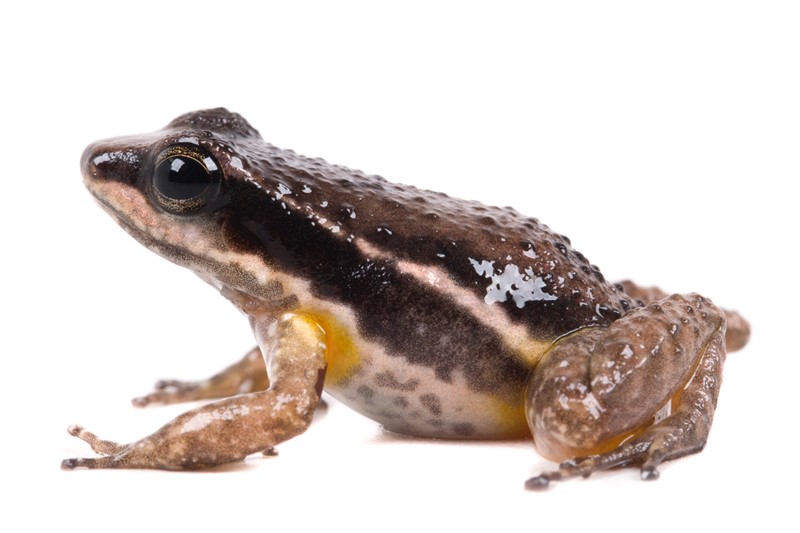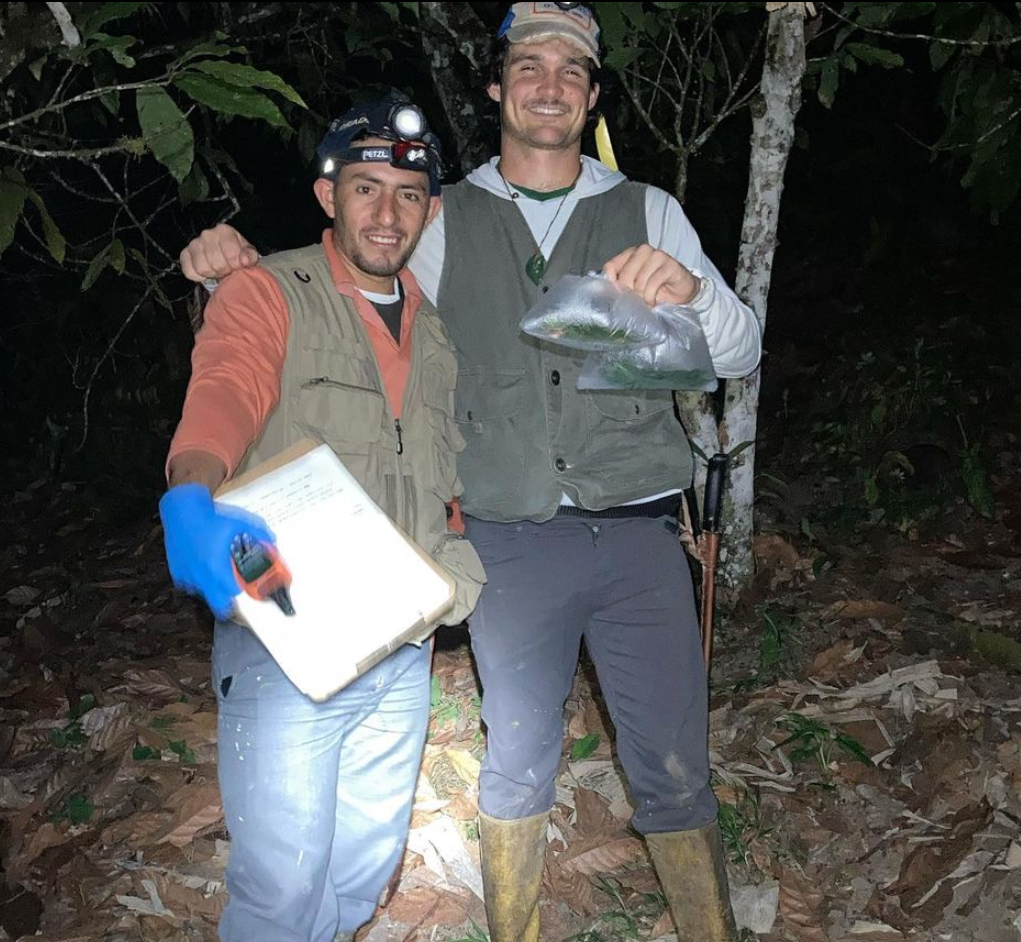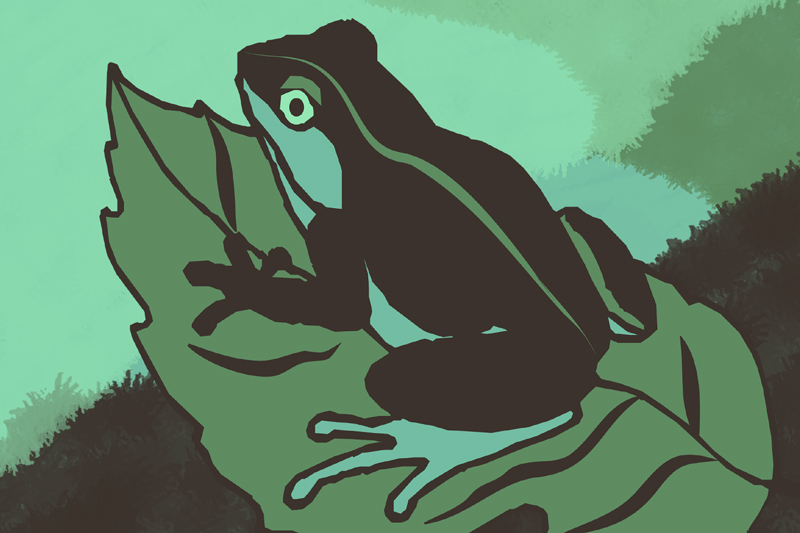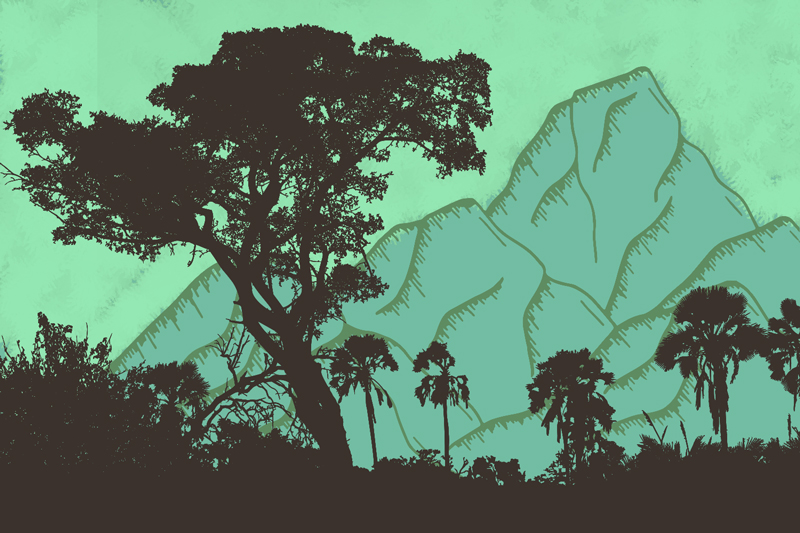

Photo by Gustavo Pazmiño
FCAT researchers have recently found a new population of the Bilsa white-chested frog (Leucosthethus bilsa)– an IUCN Critically Endangered species, whose previously known range was limited to a small 6 km2 area within the Bilsa Biological Reserve. As part of a larger project looking into the relationship between amphibian biodiversity and cacao production, FCATeros Darwin Zambrano, Julio Loor and Holden Jones, PhD Student at the University of Hawai’i at Mānoa in the Zahawi lab and current Fulbright Fellow in the lab of herpetologist Dr. Juan Manuel Guayasamin at the Universidad San Francisco de Quito found the Bilsa white-chested frog in their remnant forest transects near the FCAT station. The finding sparked a search for the species which has now been reported at 4 different locations within the 650 ha FCAT reserve. Holden and Juan Manuel are planning to write and publish a report formally describing the range expansion of the species, further demonstrating the conservation value of the FCAT reserve.


First described to science in 2020, the Bilsa white-chested frog was listed as critically endangered in 2021 due to its small geographic range and the fact that its habitat is heavily threatened and continually disappearing. The species inhabits riparian areas with steep slopes and small valley streams and is thought to be endemic to the Mache-Chindul mountains of northwestern Ecuador. The species appears heavily reliant on pristine forest habitat, as it has not been found in secondary forest or cacao plantations despite intensive surveying in the area. Like other poison-dart frogs in the family Dendrobatidae, males of the Bilsa-white chested frog care for tadpoles by transporting them on their back.
The discovery of this new population of the Bilsa white-chested frog raises the total of known critically endangered or endangered species within the FCAT reserve to seven.







